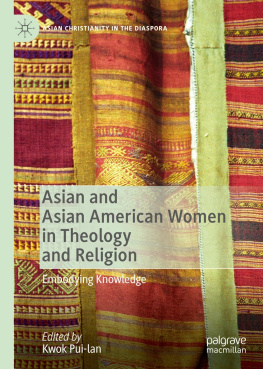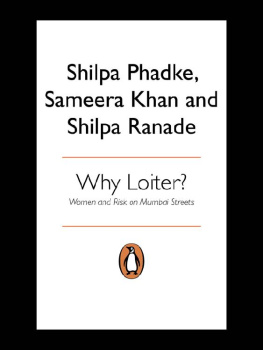NEW YORK UNIVERSITY PRESS
New York
www.nyupress.org
2016 by New York University
All rights reserved
References to Internet websites (URLs) were accurate at the time of writing. Neither the author nor New York University Press is responsible for URLs that may have expired or changed since the manuscript was prepared.
ISBN: 978-1-4798-6709-7 (hardback)
ISBN: 978-1-4798-1573-9 (paperback)
For Library of Congress Cataloging-in-Publication data, please contact the Library of Congress.
New York University Press books are printed on acid-free paper, and their binding materials are chosen for strength and durability. We strive to use environmentally responsible suppliers and materials to the greatest extent possible in publishing our books.
Manufactured in the United States of America
10 9 8 7 6 5 4 3 2 1
Also available as an ebook
Working on this follow-up collection has been more pleasure than labor, thanks to our outstanding contributors and everyone at NYU Press. We thank them, and our insightful anonymous reviewers, for their hard work, assistance, and, of course, patience.
Shilpa wishes to thank the University of Virginia for its institutional support, Leilani extends thanks to the University of Washingtons Department of Communication, and Tasha is grateful for the support of the Center for 21th Century Studies and the University of WisconsinMilwaukee. We are lucky to enjoy loving friends and family, the fellowship of wise and helpful colleagues, and the continuous engagement of our wonderful students. We three are honored and thankful for them all, as we are for our own sustaining friendship and the opportunity to work together on this book.
Shilpa Dav, Leilani Nishime, and Tasha Oren
When setting out nearly a decade ago to collect and publish our first volume, East Main Street: Asian American Popular Culture, we sought to broaden the parameters of what then constituted Asian American as a scholarly category. At the time, our argument was that Asian American studies should consider popular culture in its broadest scope, as we called for a multidisciplinary study of Asian American cultural productions as part of a complex conversation with American history, contemporary mainstream culture, and burgeoning digital technologies.
The study of popular culture within Asian American studies has since emerged as a rich, mature, and multifaceted field in which such approaches are hardly novel. Yet scholars must now contend with a media environment that has only grown denser, broader, faster, and more agile. Technologies of production, reception, and content delivery are yet again straining our conventional grasp of popular circulation. The proliferating avenues of media convergence force us to rearticulate the impact of media platforms on the creation of new audiences and textual meanings. The enduring allure of celebrity and the rapid rise and fall of popular trends have only intensified, and their fragmentation across media cultures challenge scholars to divine their significance in more complicated and multivalent ways.
In addition to the always-churning engine of global Hollywood, the increasing reach of an assembled transnational media culture and the growing production of global popular culture in Asia are also reshaping our models of locality, influence, and provenance. These changes have invited new possibilities for envisioning how popular culture and media forms work to simultaneously maintain and shift our understanding of Asian American identity beyond the tropes of immigrant and native. Evolving means of making, interacting with, and consuming media form a complex, even overwhelming, terrain. Trying to track the often ephemeral work of local community formations to share histories in the midst of political and social shifts means that scholars must travel global pathways as migration becomes an ever more formative experience for Asian American communities. It is in the midst of this fully networked and dynamic cultural moment that our current collection sets off to chart a global Asian American popular media culture.
Asian American popular culture is not only on Main Streetas the title of our first collection declaredbut also at the crossroads of global and national expressions of culture intersecting with race, gender, class, and religion in multiple arenas of exchange, both cultural and commercial. While Asian Americans have been the subject and object of American popular culture for a long time, the accessibility of culture across national borders and the rapid circulation of cultural flashpointslike K-pop viral YouTube sensation Psy; Jeremy Lins sudden, and brief, global superstardom; or the current American obsessions with Bollywood and ramenoffer new interesting pathways in conceiving how categories of Asian and Asian American exist in counterbalance and dependency within global popular culture. The growth in representation, attention, and media access to people of color and recent increases in the outward flow and hybridization of Asian cultural products such as Hallyu, transnational music and dance collaborations, food, gaming, and fashion all present new and expanded horizons for the study of Asian American popular culture in a global context.
Even in the midst of all this changethe rise of new social and media platforms in the early part of the twenty-first century and in the context of a supposed post-racial United States after the 2008 election of President Barack Obamacentral questions remain constant in the meeting place of Asian American studies and media studies. How do we engage with culture? How do Asian Americans continue to influence the popular, and what are the limits and distinctions between mainstream and the margins? Asian American popular culture remains a crucial site for understanding how communities share information and how the meanings of mainstream are shaped with technology and inflected by historical representations and categories. Asian American popular culture is also at the crux of global and national trends in media studies because it crosses and collapses boundaries, acting as a lens with which to view the ebbs and flows of transnational influences on global and American cultures.
In Global Asian American Popular Cultures, we highlight new approaches to popular culture, both contemporary and historic, that address these global currents from a variety of perspectives. In this volume, we showcase the productive encounter of Asian American studies with the fields of American studies, anthropology, communications, film, history, media, music, literature, museum studies, television studies, sociology, and cultural studies. Speaking to the broadening of Asian American studies, the essays collected here certainly push on geographical and disciplinary borders but also press on conventions of foci and scale. In this, we stake out new approaches to the popular that account for emerging textual fields, global producers and technologies of distribution, transmedial circulation, and transnational mobility in the peripheries as well as in mainstream culture. These interdisciplinary works provide fresh insights to our current global media moment and to Asian American studies as they pose new questions, draw surprising links, and offer fresh methods and possibilities.










